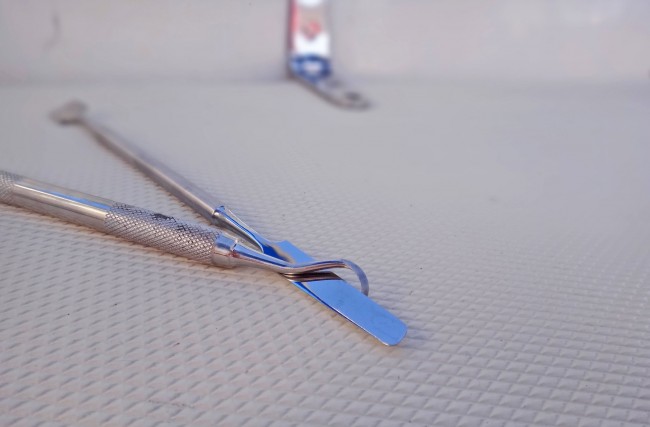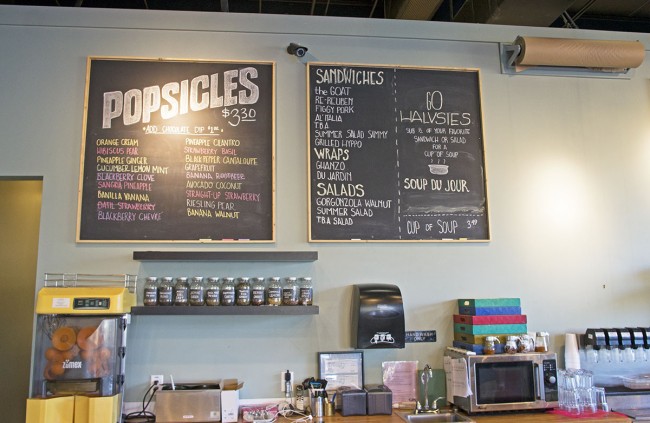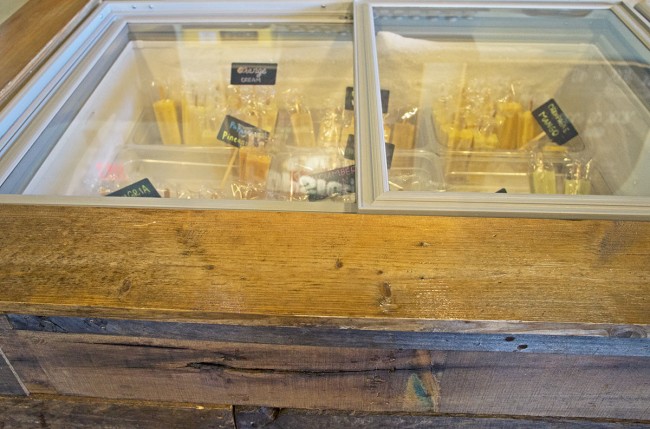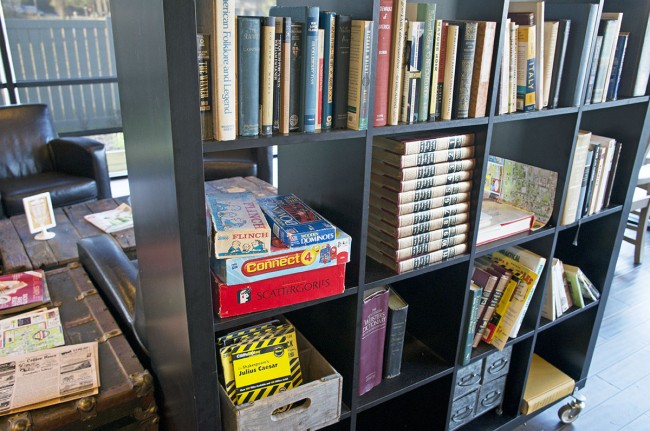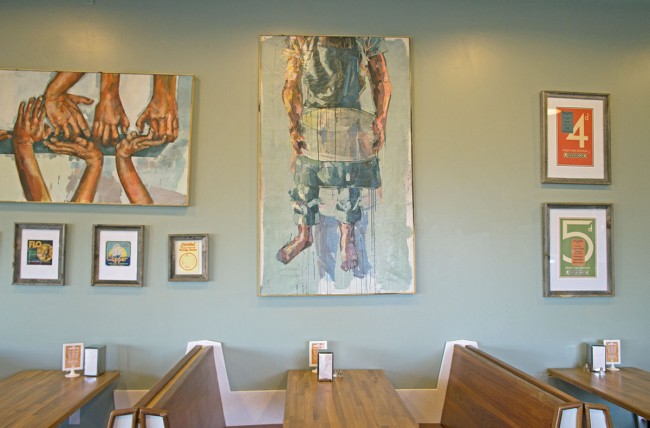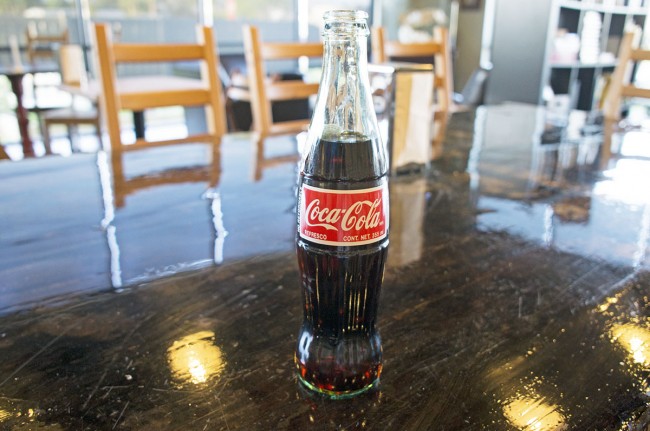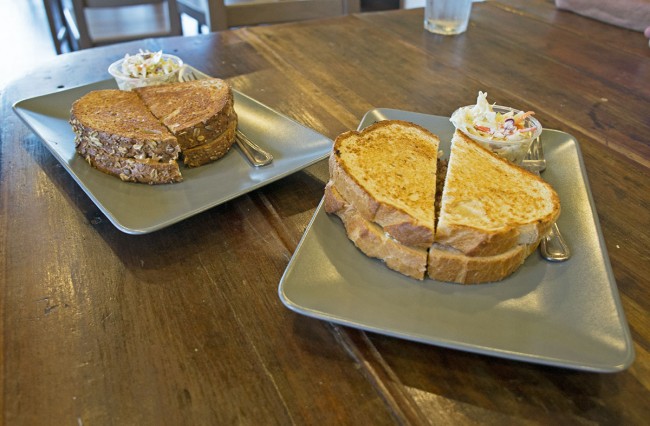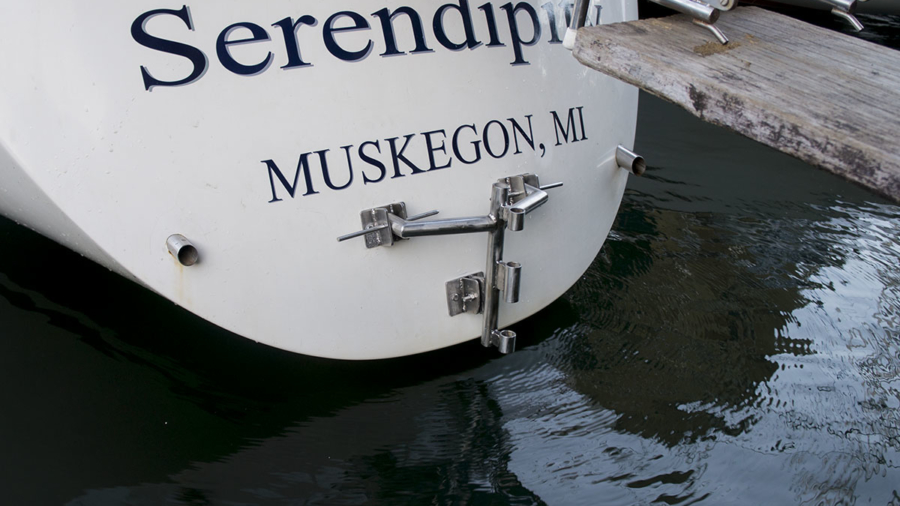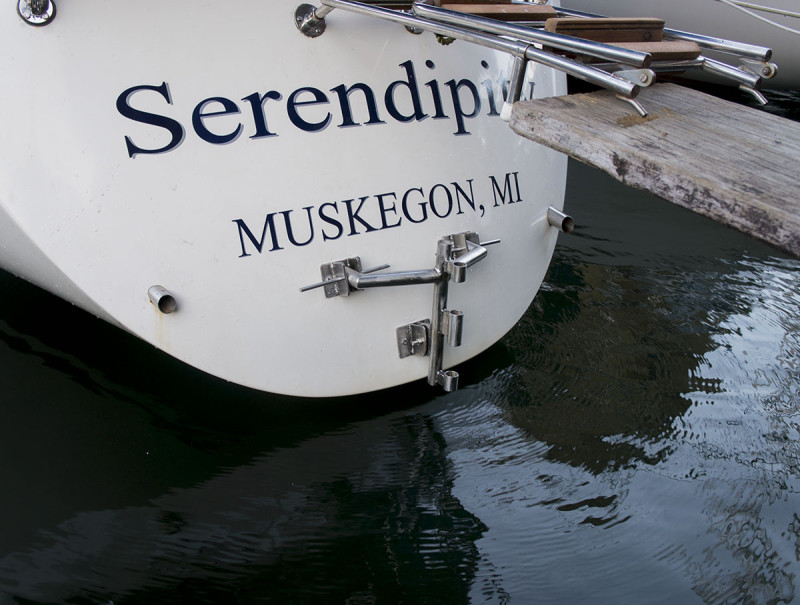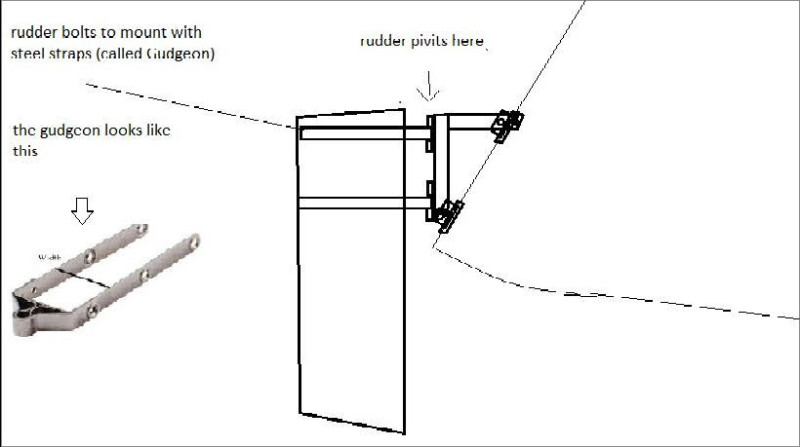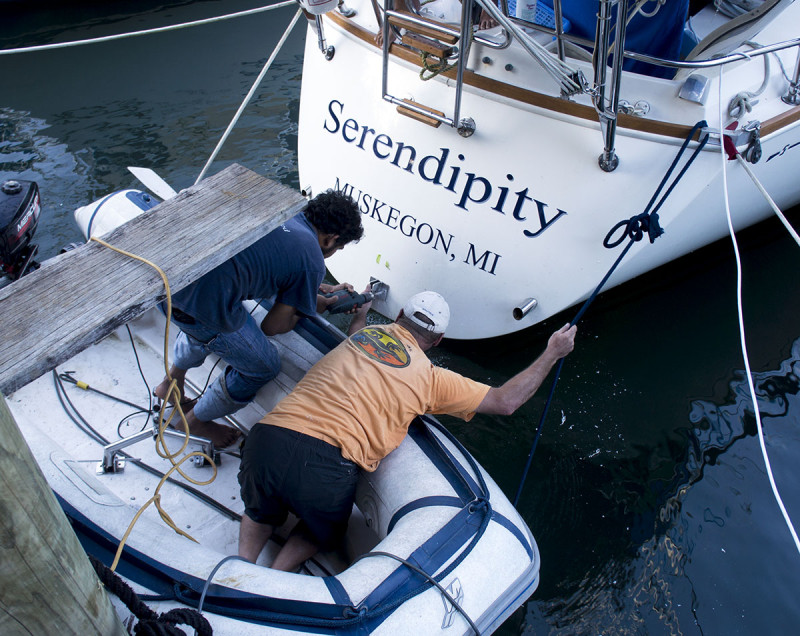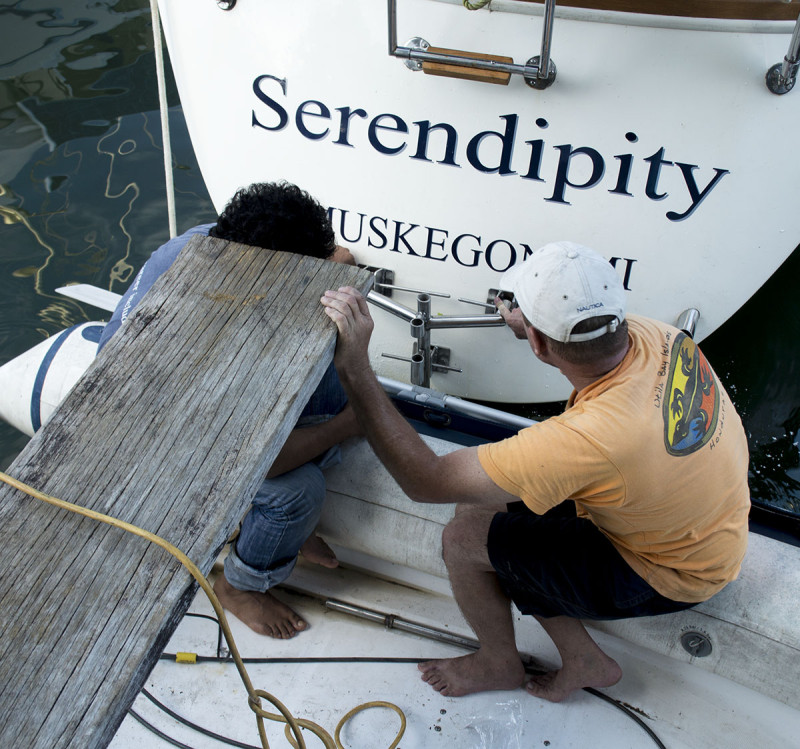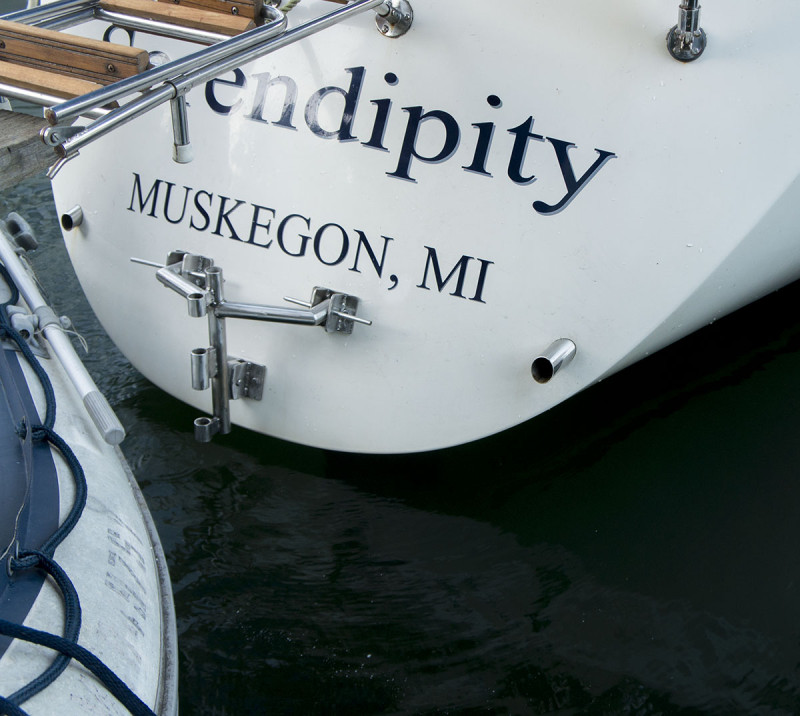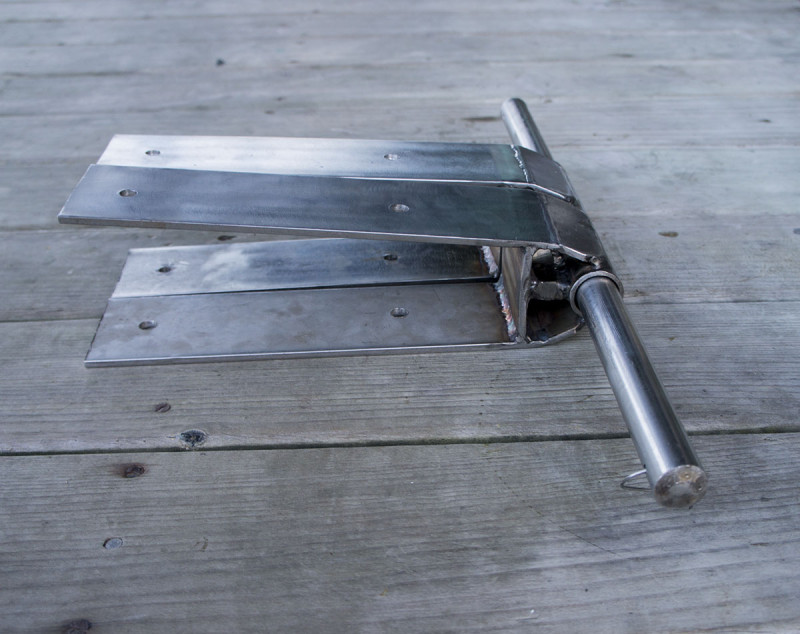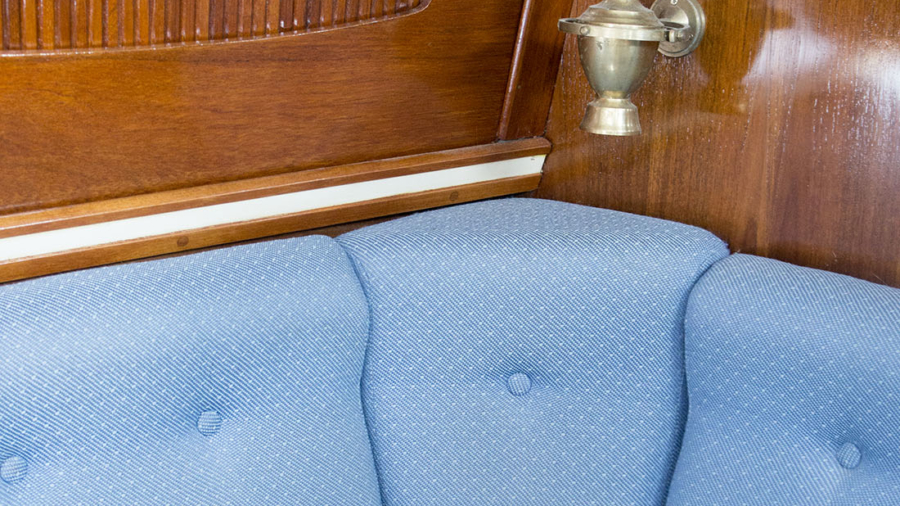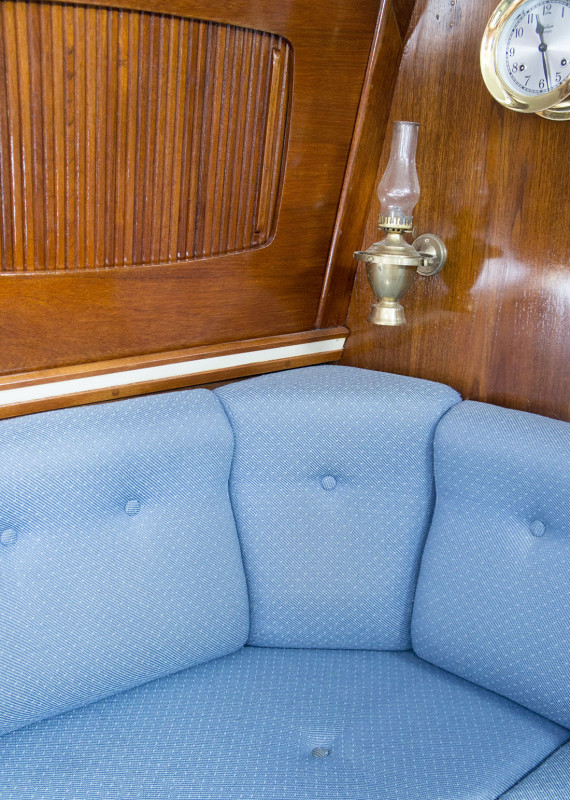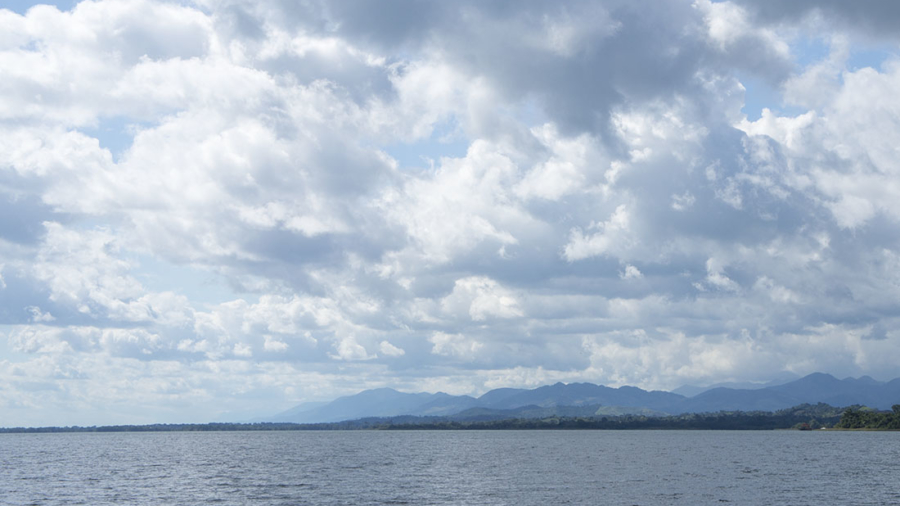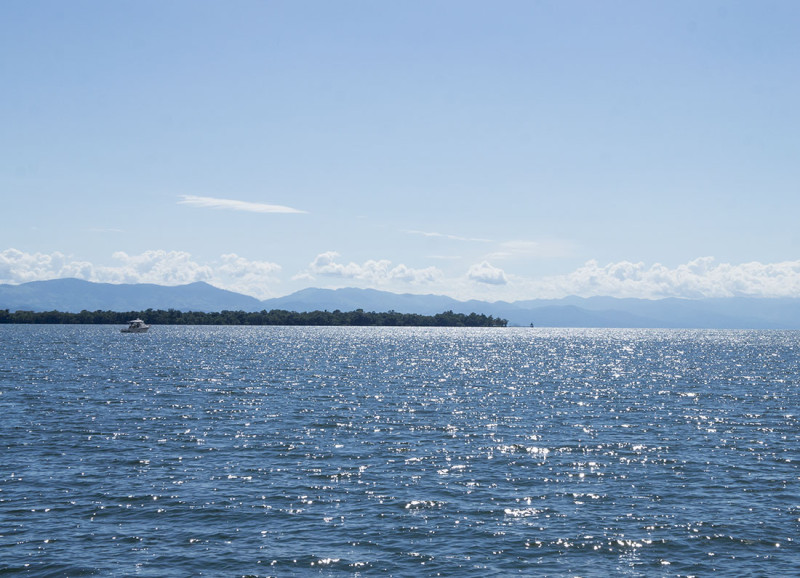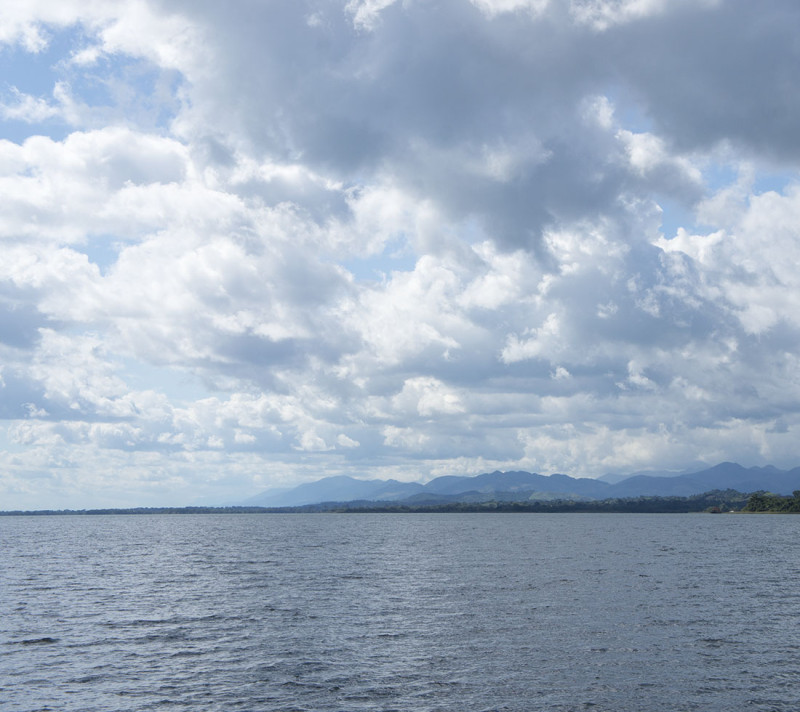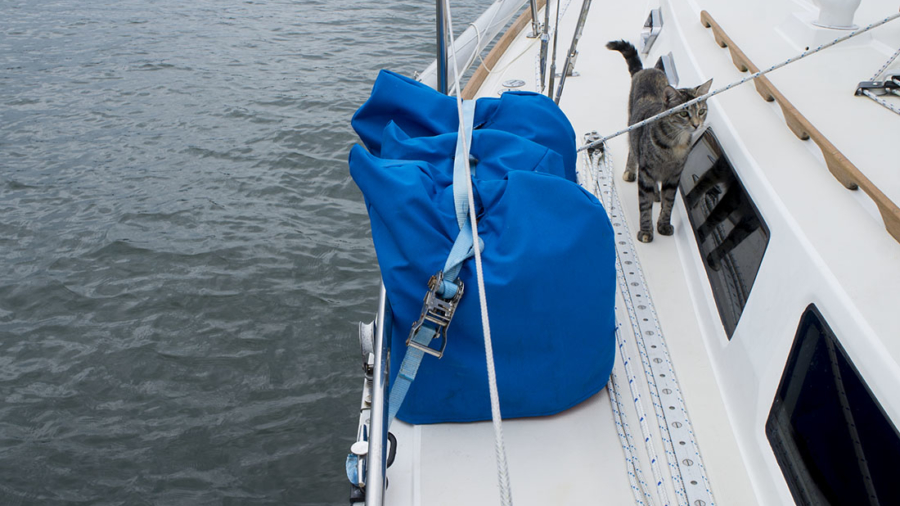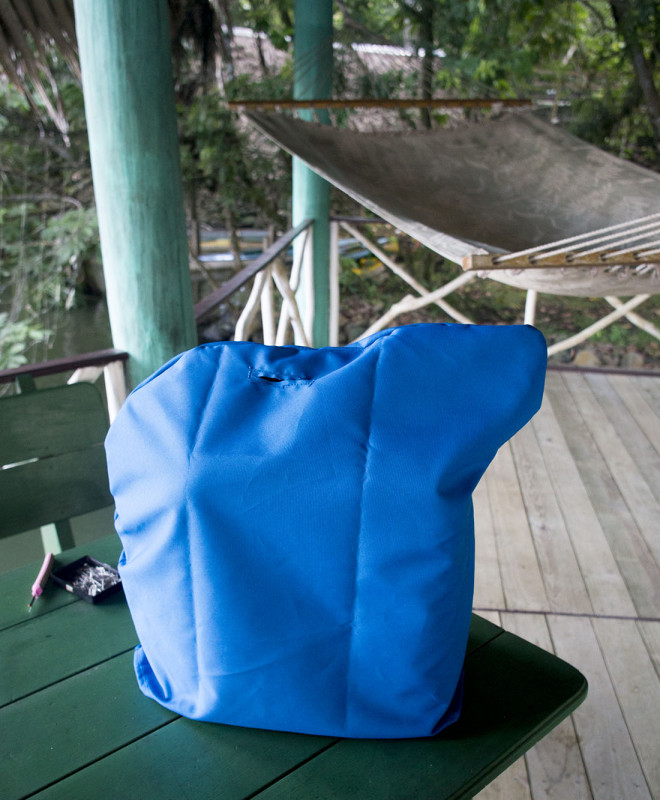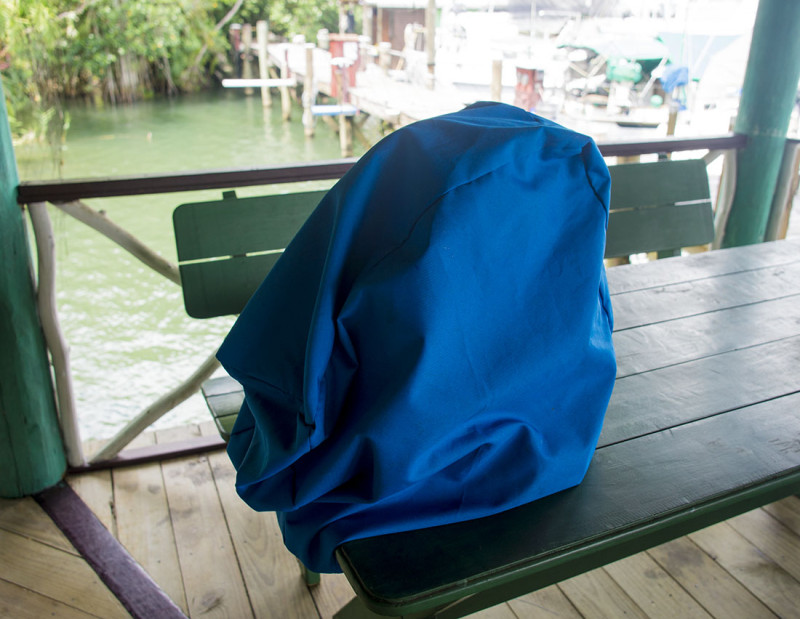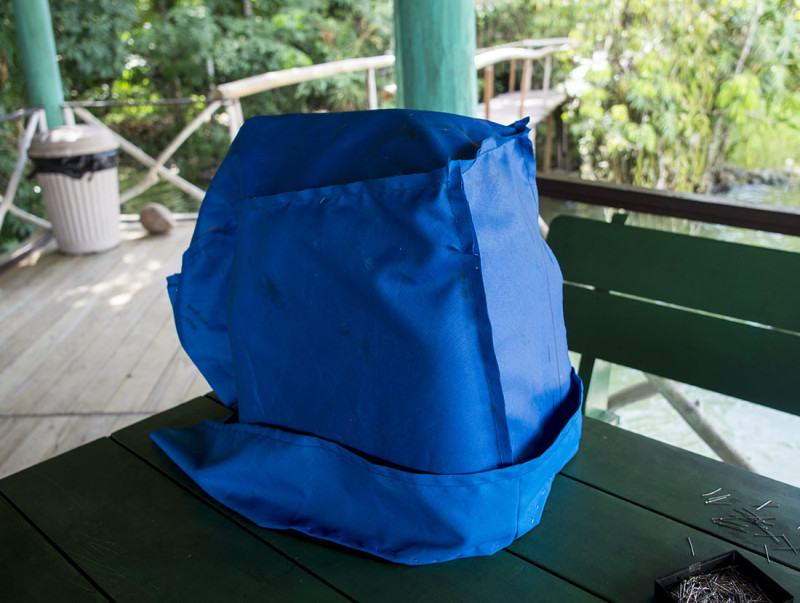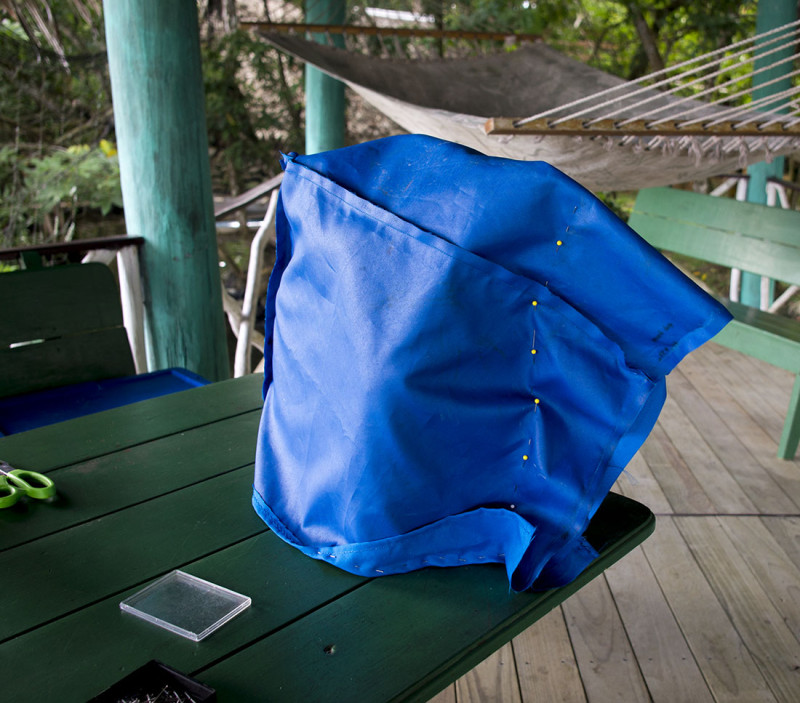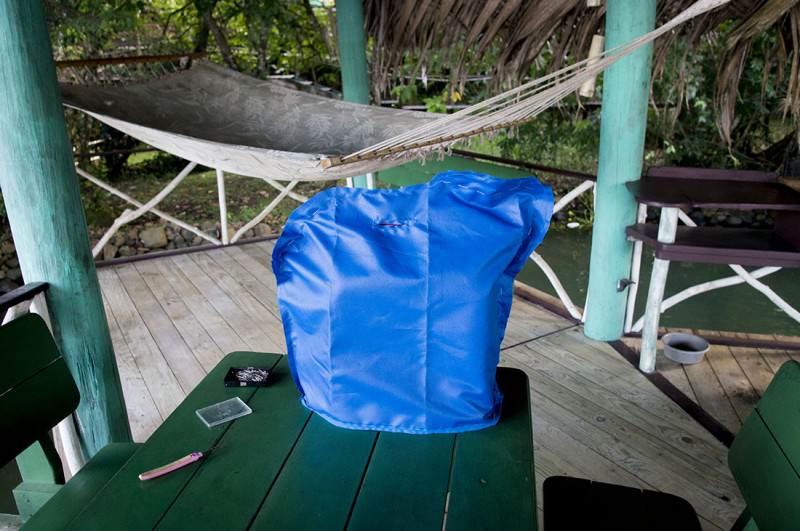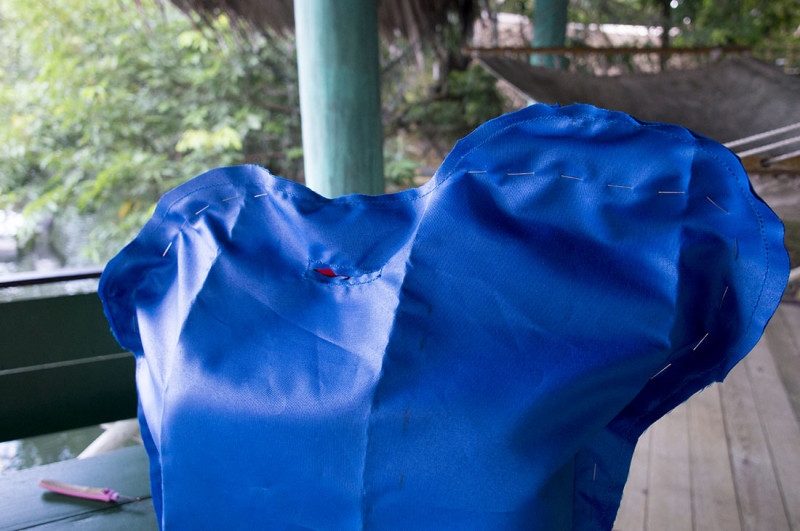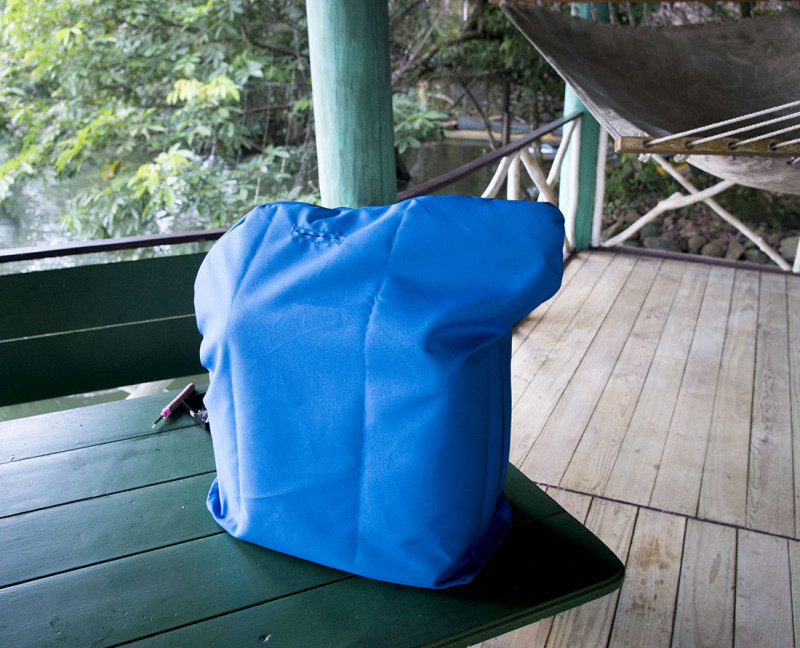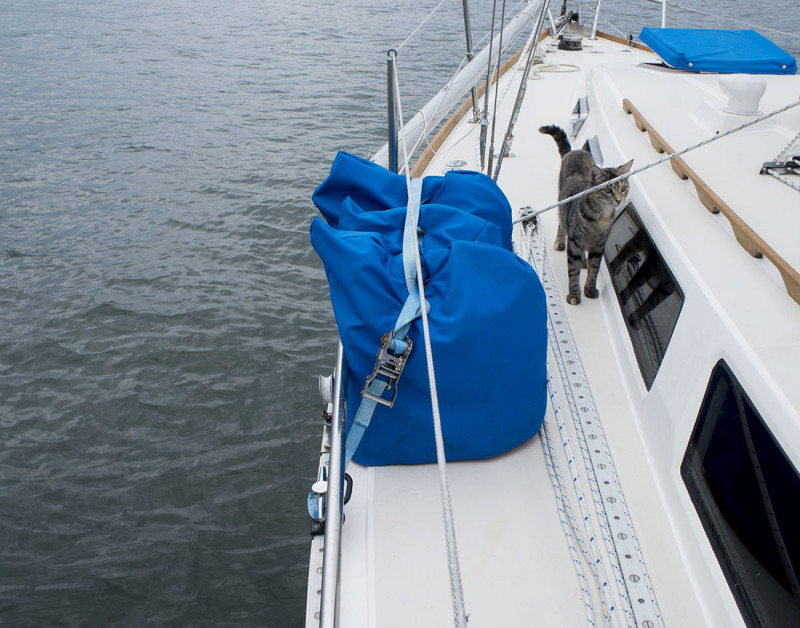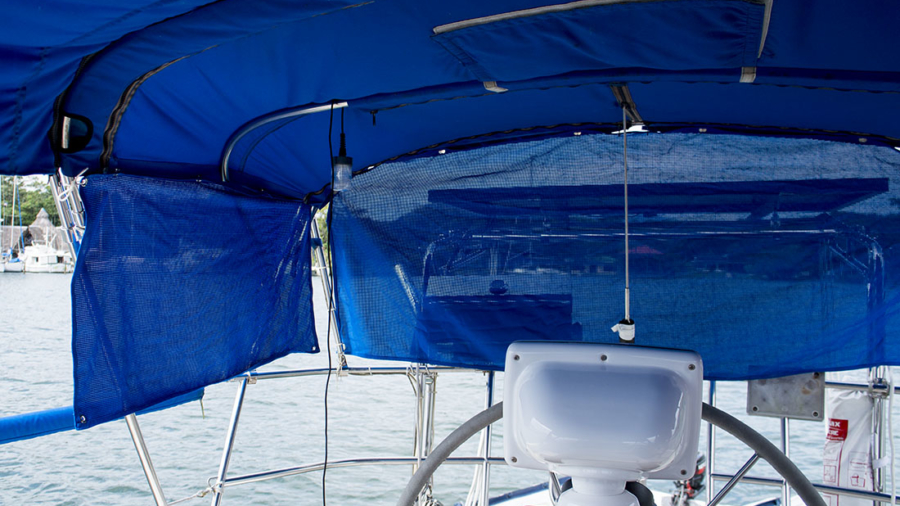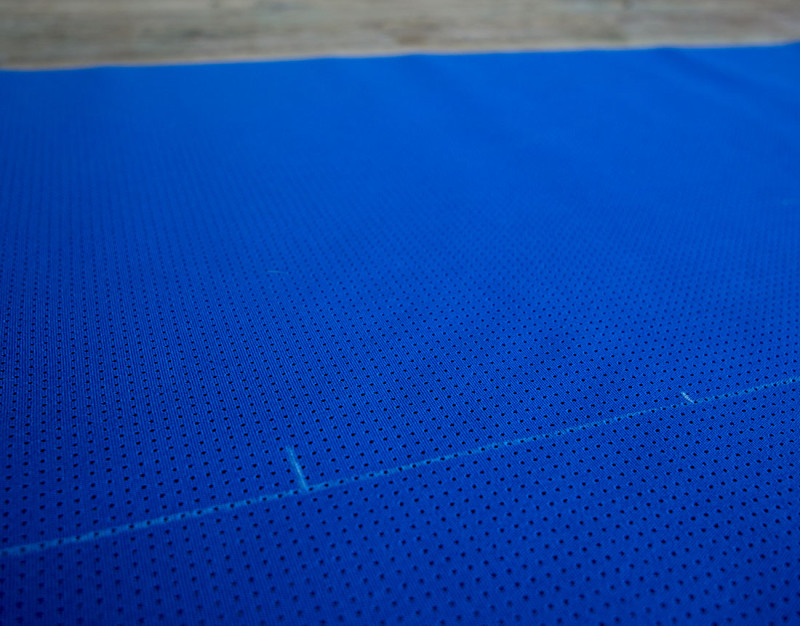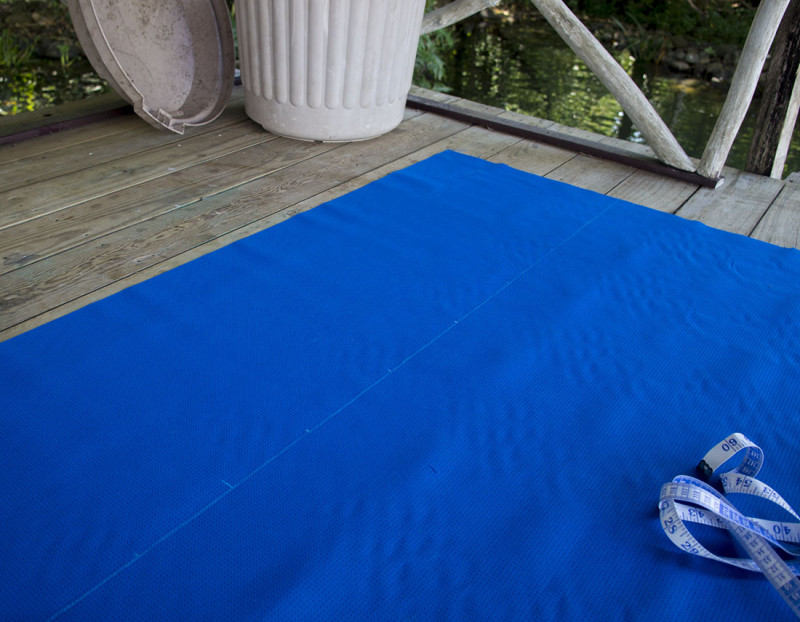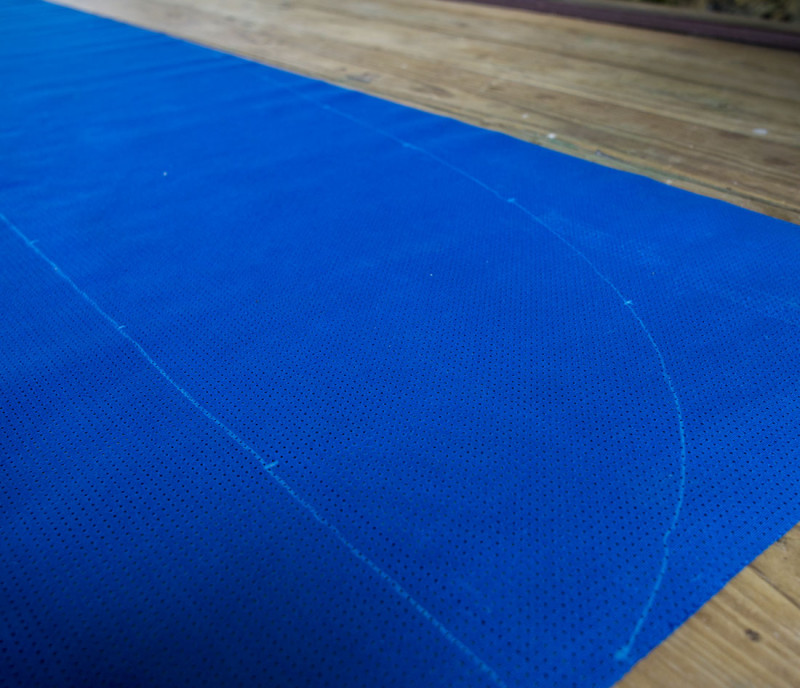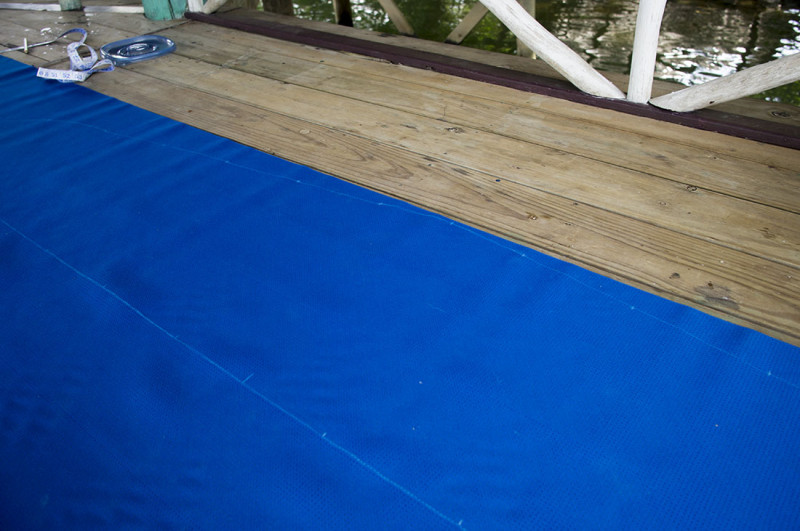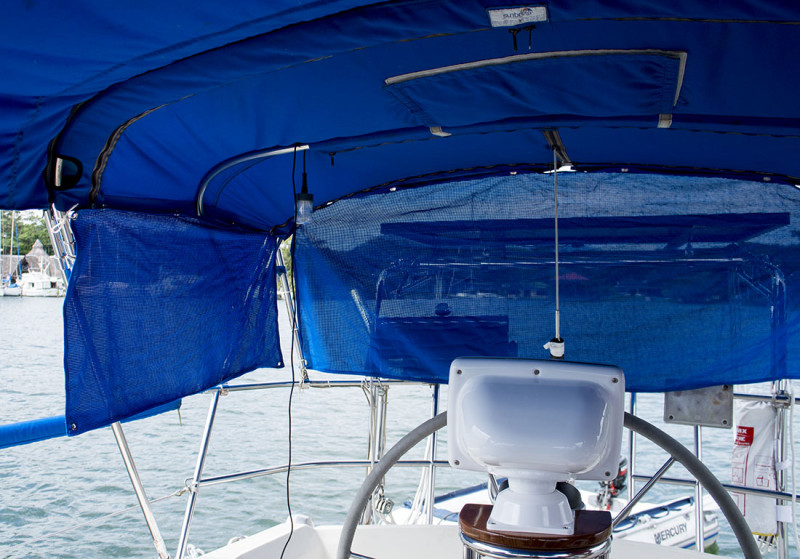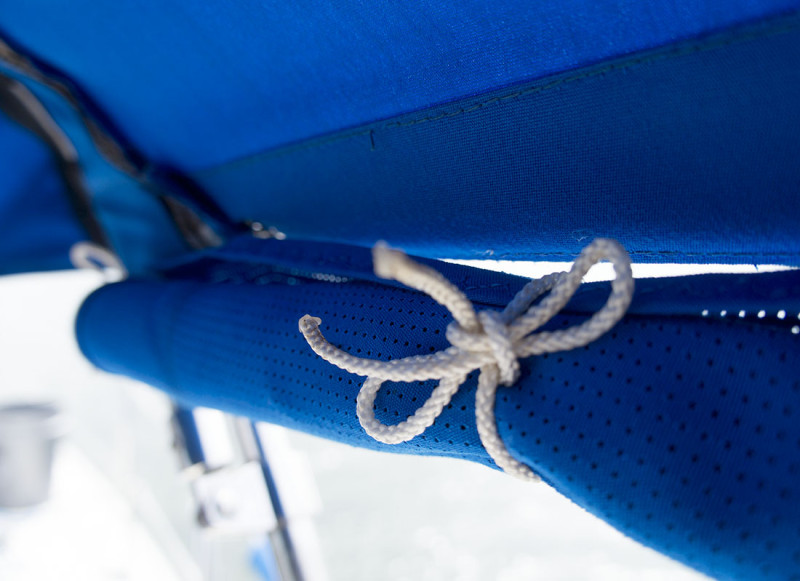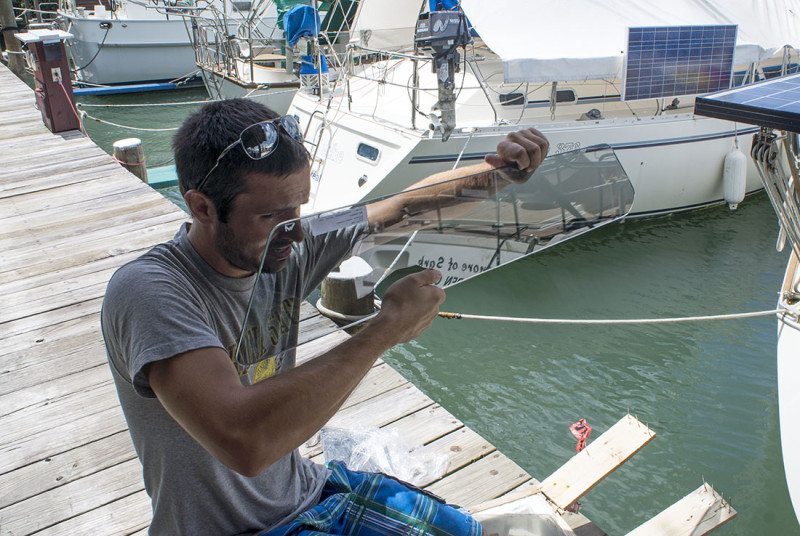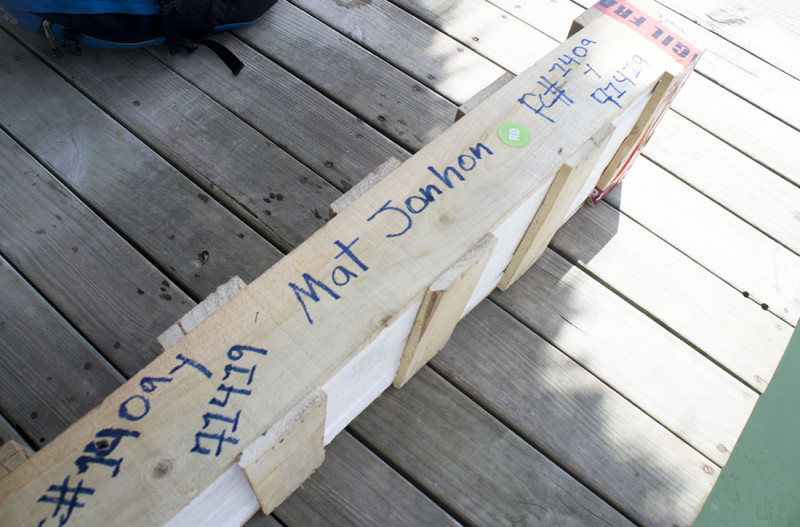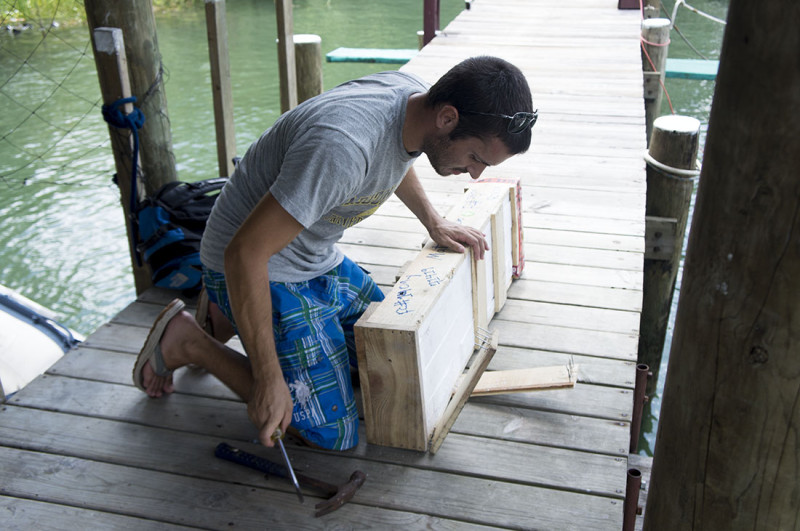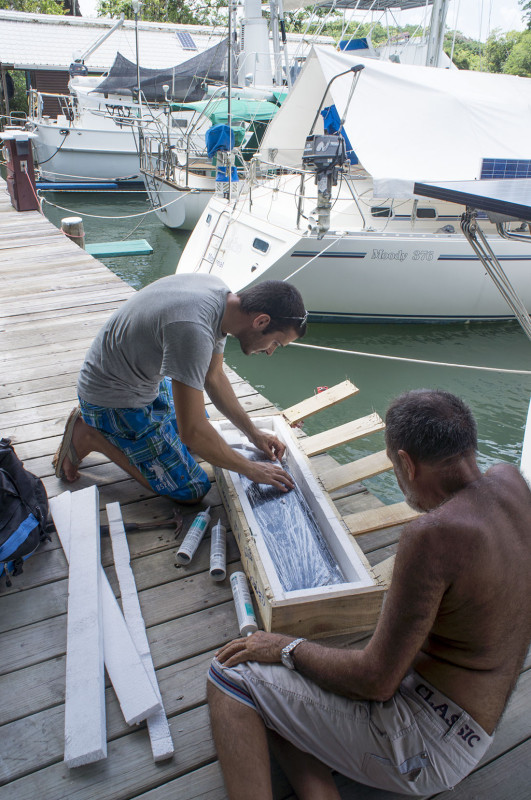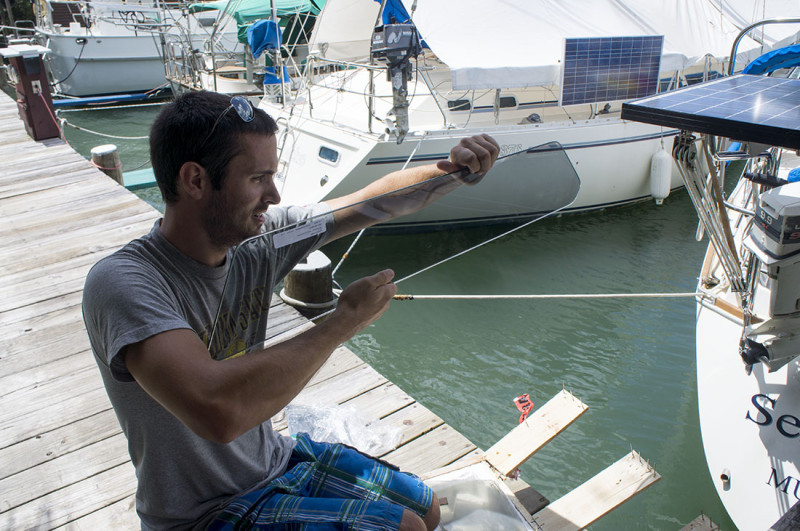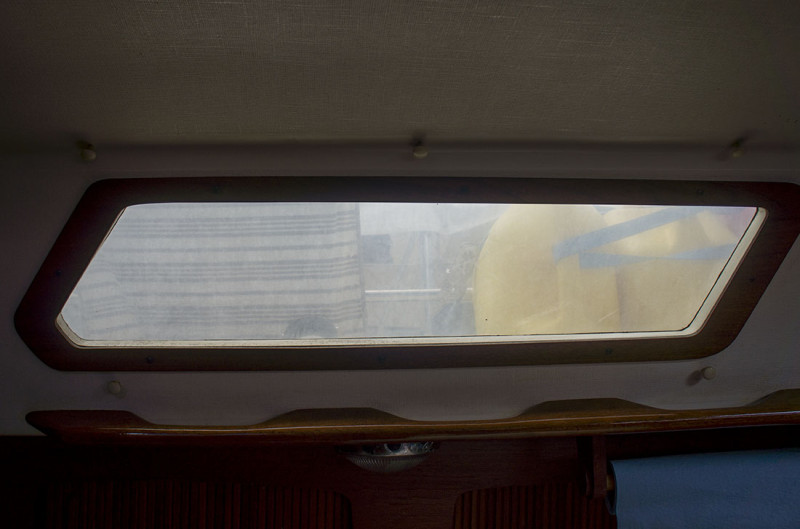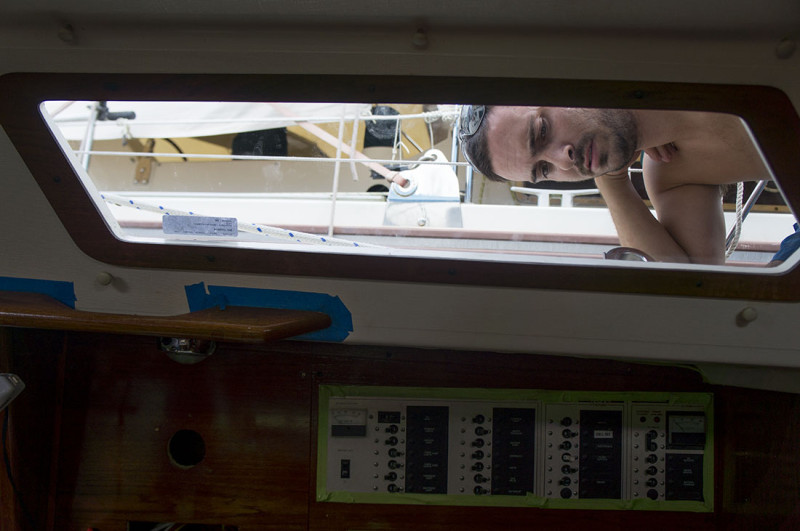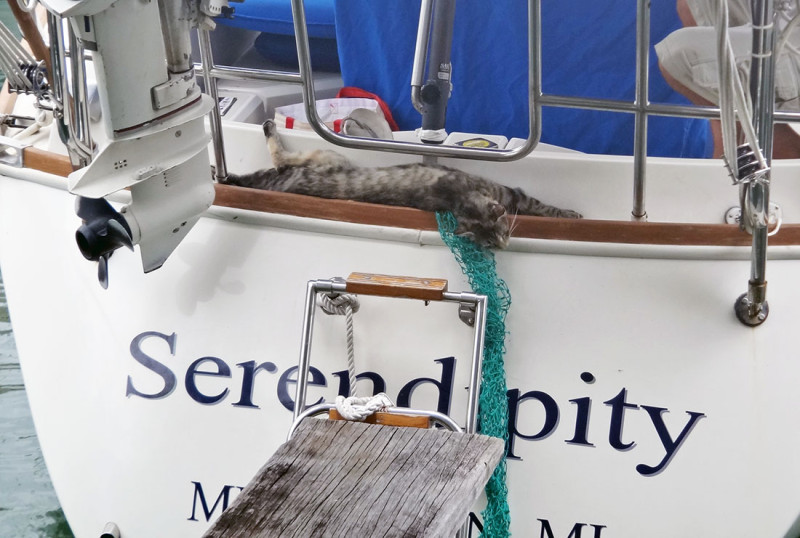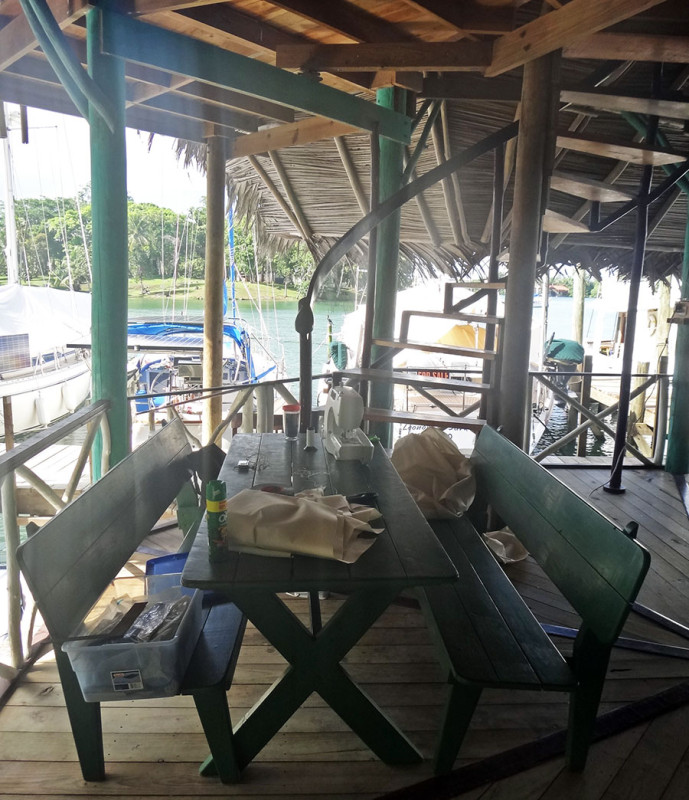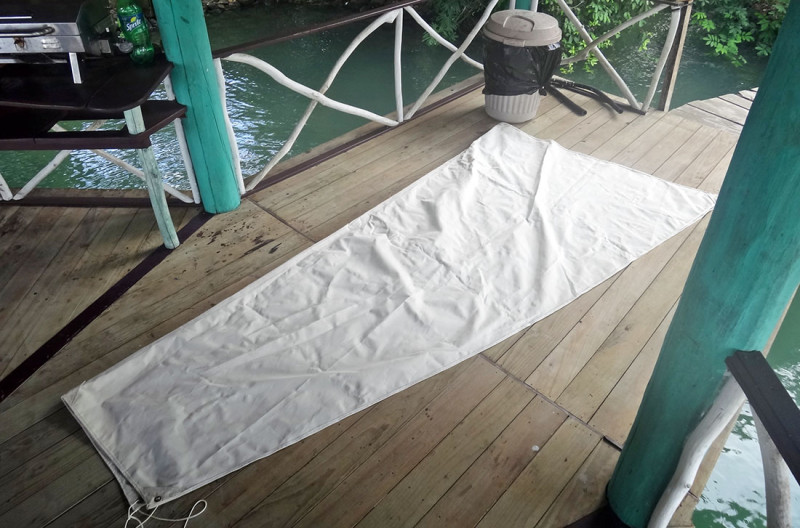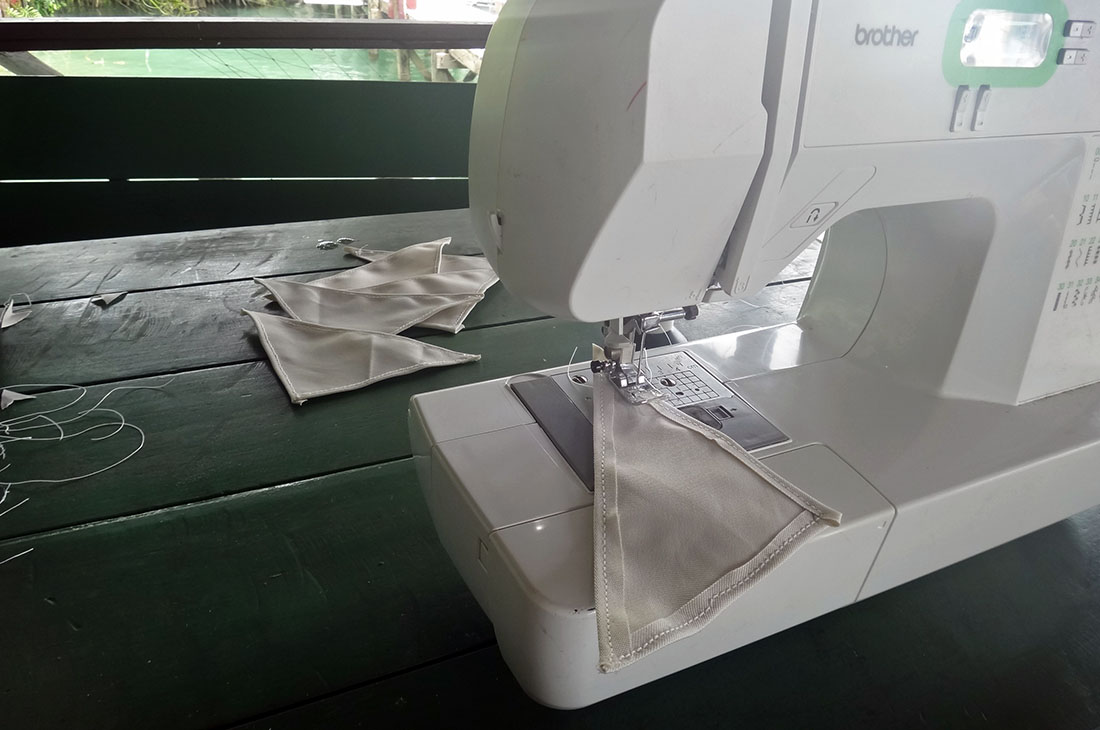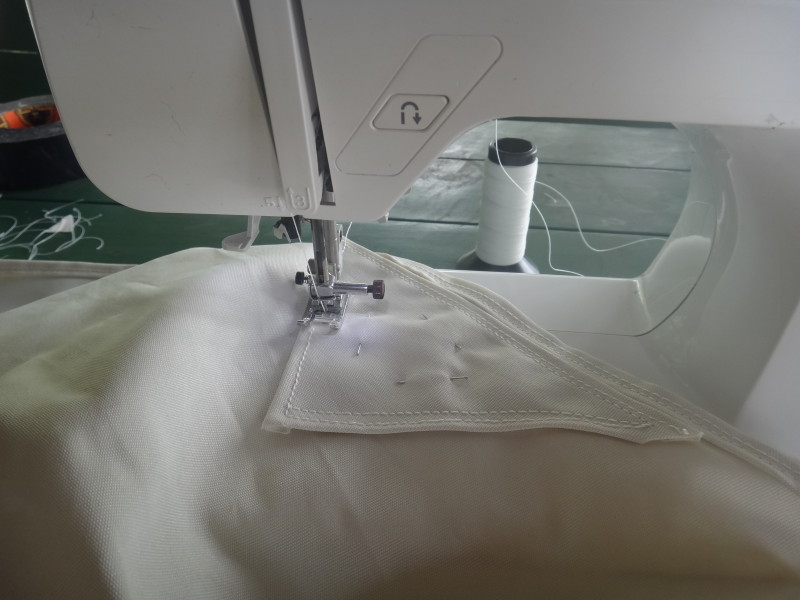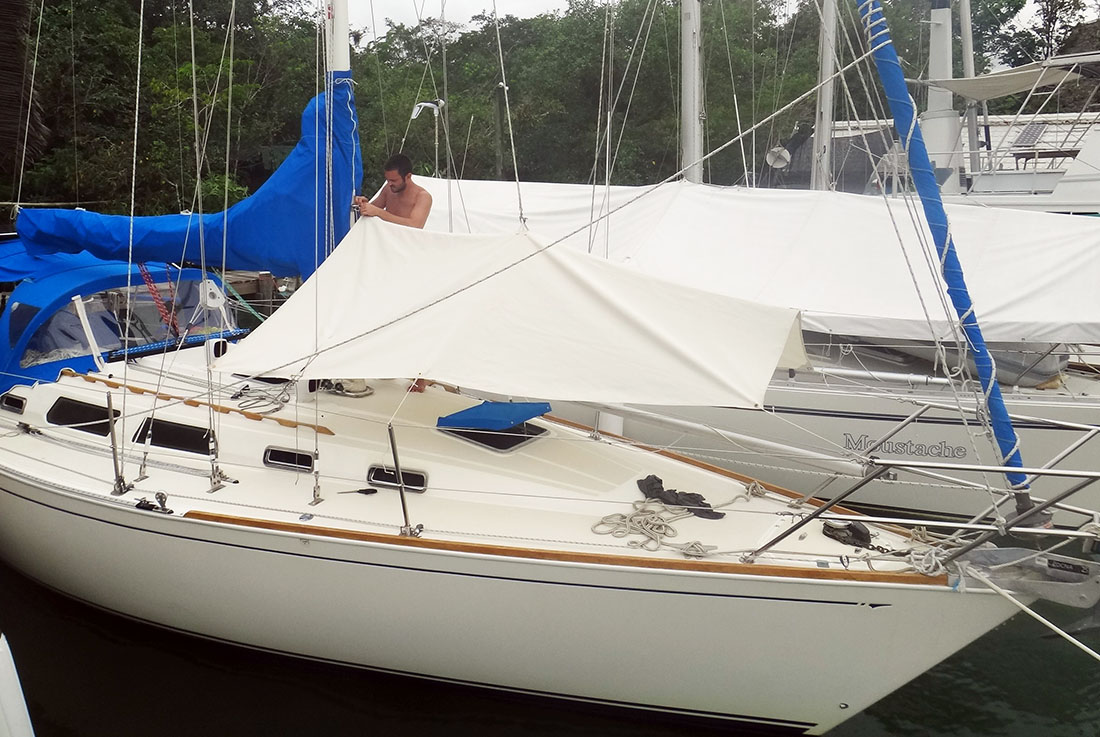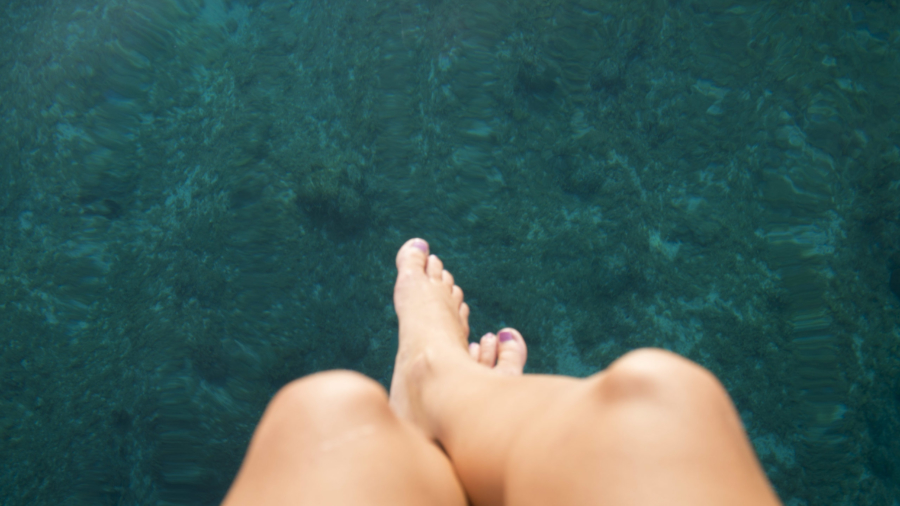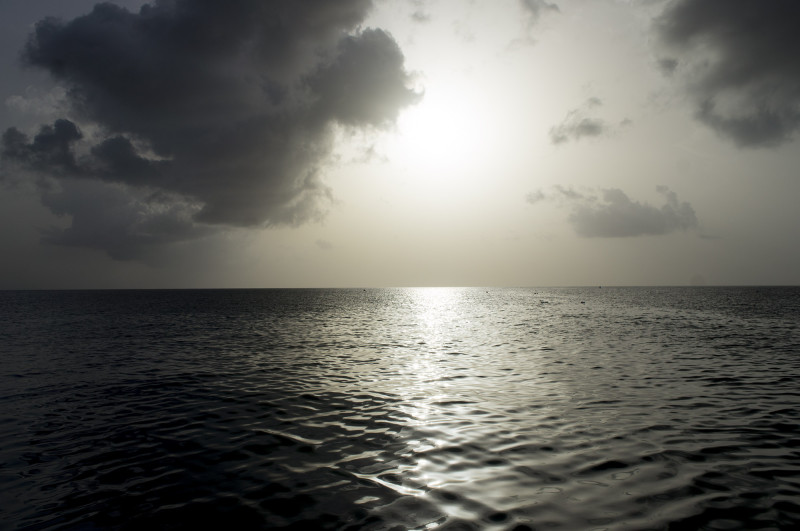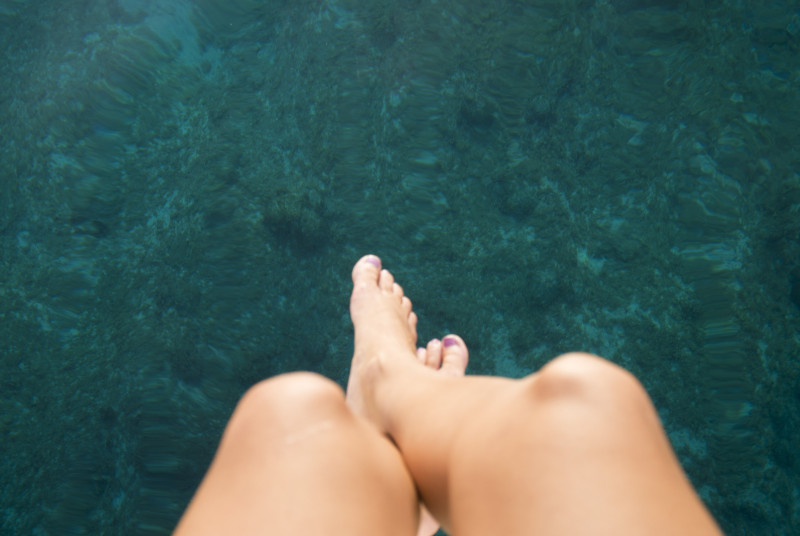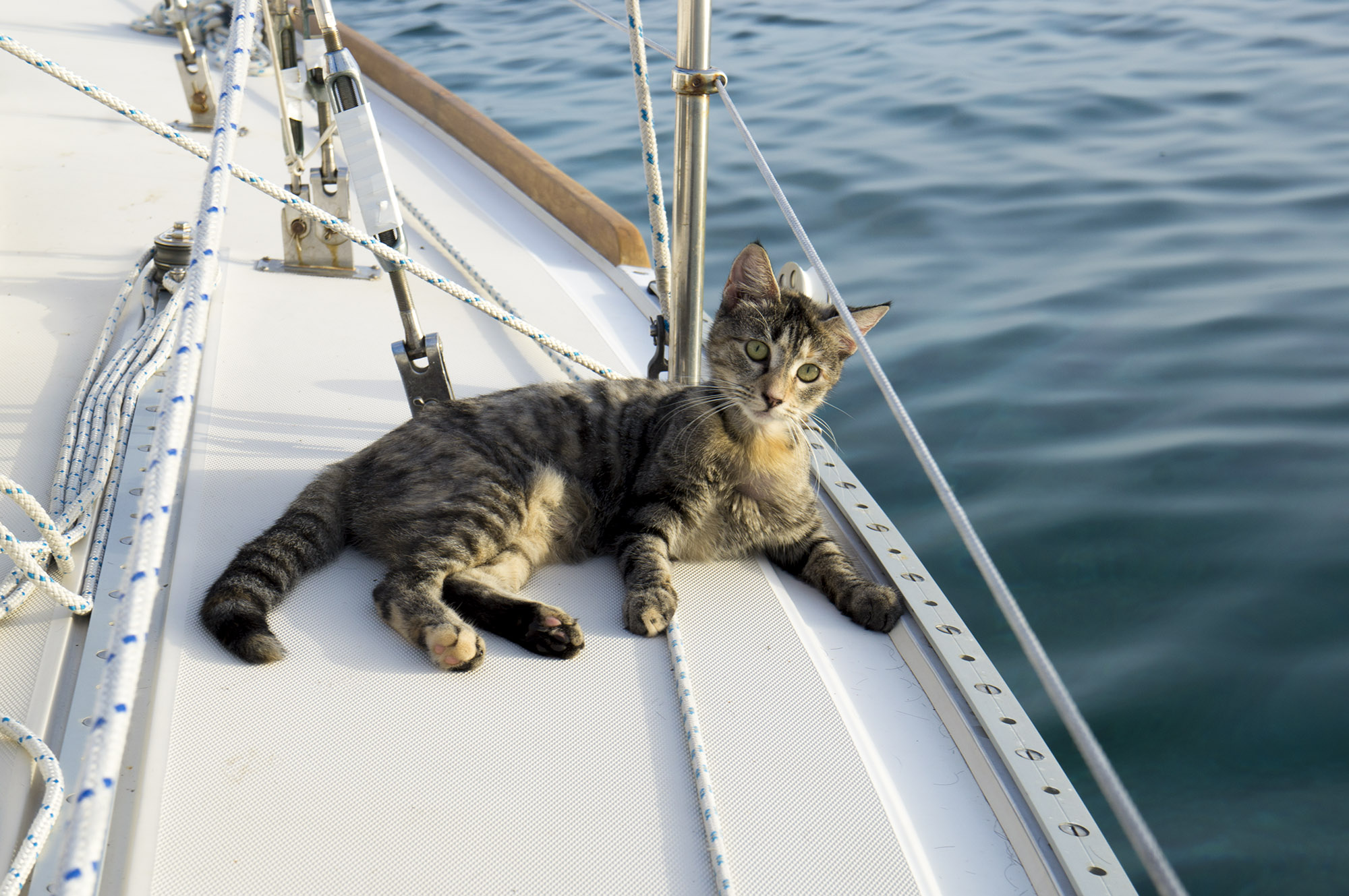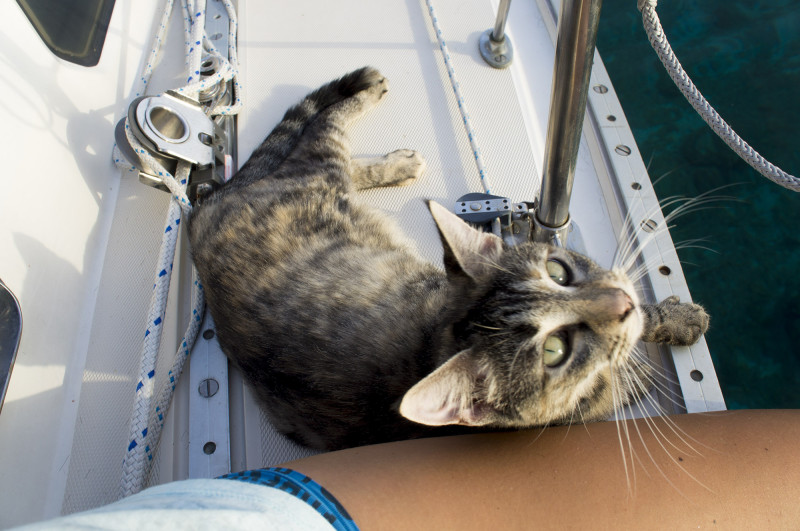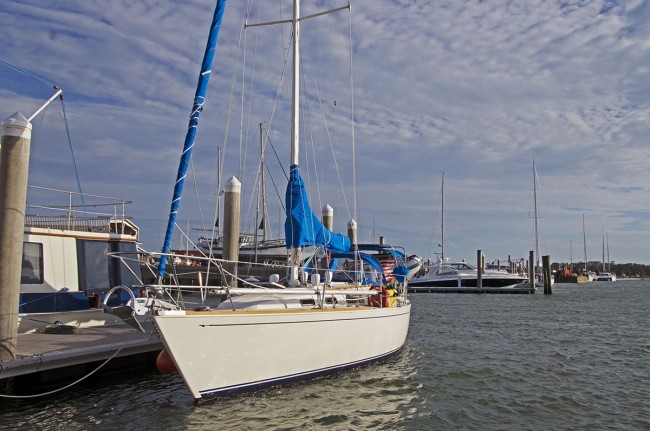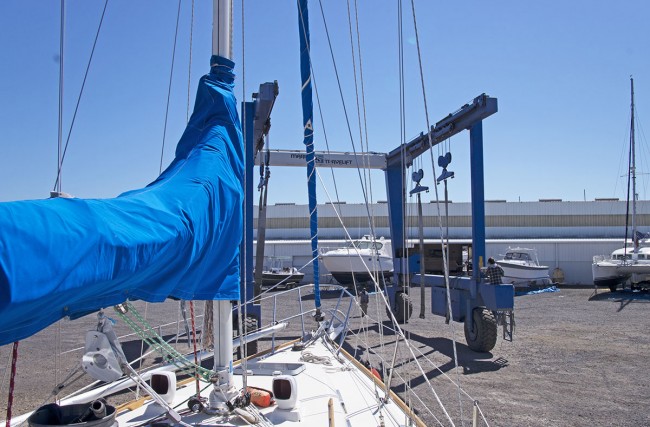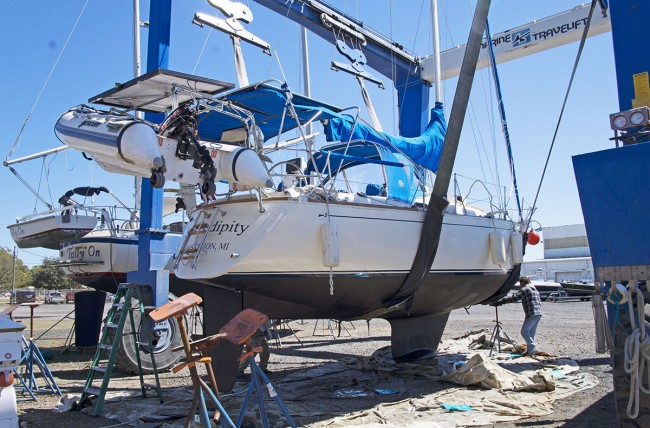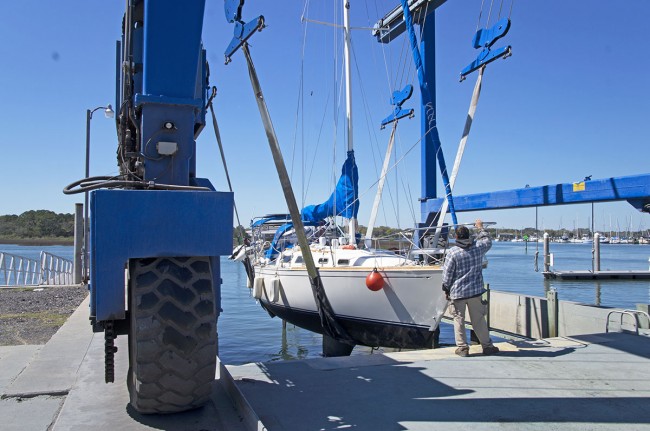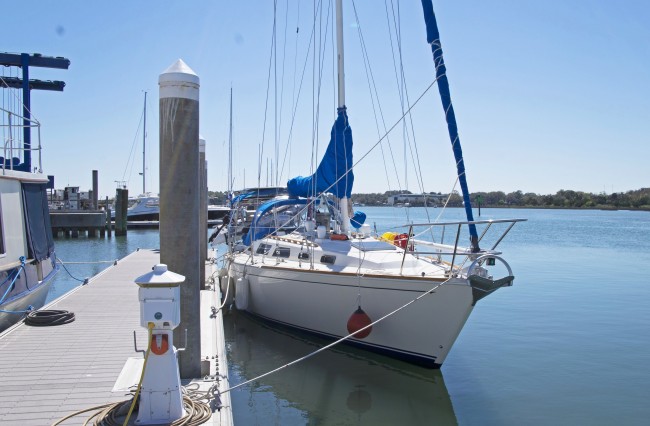Tuesday March 5, 2013
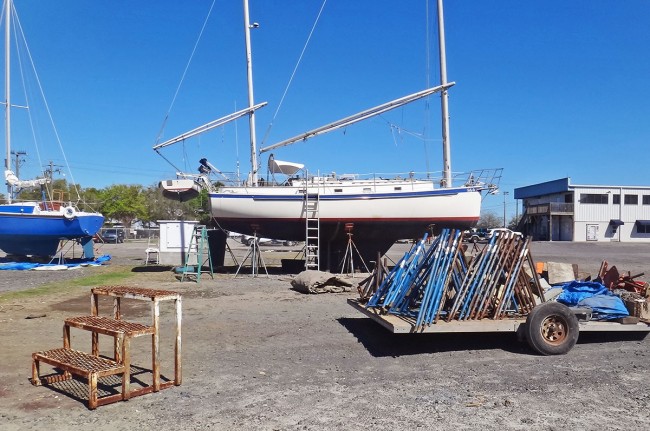
As much as we would have loved to lounge in our sunny cockpit yesterday, enjoying our new water views, there was still much work to be done. Now that we’re back in the water, it means we’ll be LEAVING, and this requires a lot of work. Yes, we had just thrown a weekend away while sitting in front of our computers, but it was cold and windy, and not preferable for any of the jobs we needed to tackle. Just after we were tied off to the dock, the cockpit was emptied out and washed. We had skipped this part the other weekend since up until about two days ago our cockpit had become another garage, spilling over with sport-a-seats, grill parts, and cleaning products. We had managed to pack all the items back into place just before getting lifted back into the water, but all this did was reveal a bevy of new stains and spots on top of the normal dirt build up that could only come from three months of a construction zone with no cleanings. Pulling out the hose and almost every product in our arsenal we attacked each spot, some coming out with ease and others leaving us with the two questions of ‘What caused this’, and ‘How the hell do we get it off?’. (Like the resin I told Matt to make sure doesn’t spill, but he said would clean right off, cough, cough)
 Some of the areas were hit with Zep degreaser which when placed in a plastic spray bottle, I thought was Simple Green. When I began to complain to Matt that it felt I had just been stung by a bee on my foot he goes, “It’s probably the acid from this cleaner. You’ll want to keep your skin away from all the areas we just sprayed.â€. Uh huh. Thanks for the warning. Once the all over cleaning was done, I left Matt with such messes that were of his own doing, I took on other time consuming areas that I at least knew would eventually come clean. Such as the Butile tape that had been mushed into a few areas of the cockpit seats. Patiently working with a Goo-Gone kind of remover along with dental picks I was able to turn the ugly spots to pristine off-white, matching the surrounding areas. When we each finished our jobs to the best of our abilities I realized how late in the day it was and there were time dictated errands to run. I still needed to make it up to the post office to mail out a spare part we had just sold on e-bay, and then would be one of the never ending provisioning trips to Walmart. We had done a HUGE one with Matt’s mom while she was here, completely filling up the trunk, but now we needed all the perishables and other little things we’d forgotten. As quickly as I could, I walked the mile from the boat yard to the post office, linear drive in my backpack and a large empty cardboard box in my arms. I must have looked so awkward walking down the street, looking like I was making a slow get away with a box full of kittens.
Having eaten up an hour of my day with that stop, I rushed back to the yard so we could still make a run up to Walmart and make it back before it got dark. That gave us two hours to go six miles round trip and do all of our shopping in between. Peddling as fast as we could on our bikes, we made it there in record time and started filling our cart with things like milk and seven pounds of ground beef (five to be kept frozen). We were doing so well on time until we pushed all our items up to the checkout lane where we then waited 20 minutes just to get our things on the conveyor belt. So much for our tight schedule. Stuffing everything into our backpacks and stringing extra bags on the handle bars of our bikes we set off into the dusk, making sure to stick to the sidewalk this time instead of the bike lane that runs through the street. Completely beat up and exhausted when we got home I still did not have time to rest. We had two weeks worth of laundry to be done and I envisioned the next day being even busier without a spare moment for such things as washing our clothes. Packing the laundry bag to the point of zippers breaking I walked to the boat yard next door which has machines, and sneaked past the gate to empty area and began throwing clothes and quarters into the machine. The open air room soon became very chilly in the night, with temperatures now in the 40’s, and I shivered as I had to take off the layers I had been wearing to keep me warm and throw them into the second load of wash. Getting back to the boat at nearly 11:00 at night I didn’t even bother to put the fresh clothes away before passing out in bed.
Giving ourselves the luxury of sleeping in a little for what we knew would be the last time for awhile, as soon as we pulled ourselves out of bed and hopped on the bike to run yet more errands. We went to what I hoped would be one of our last trips in a looong time to Home Depot (we literally go there every other day), and then to Target to stock up a few other random things we had forgotten or couldn’t find at Walmart. Back at Serendipity we were busy stocking things away when one of the yard workers, Andy, came up to our boat. He had been doing rigging inspections all day so we thought it was work related, but he calmly called down to us “You might want to come up here, and if you have any spare fenders you might want to get them out at well.†Giving quizzical looks to each other we stepped out of the companionway in time to see a Catana that had just been launched, having some steerage issues in the river. Between exchanges of the captain and the men working the travel lift, we quickly figured out that the catamaran had just wrapped a line around it’s prop and lost an engine. The men on the travel lift were trying to give him instructions to put it in forward and gain any control possible, but while all of this was going on he was beginning to drift dangerously close to us.
Remembering what Andy said, I knew our only fenders were currently holding us away from our own dock, but there were a few that could be taken off without causing any damage to our boat. Untying the lines as quickly as I could I kept checking behind me, waiting for our imminent crash with the cat and wondering if my movements would be quick enough to get a fender over and soften the blow. Just when I thought I might have to keep them off with the force of my hands alone they were able to divert course and start moving away from Serendipity. What they were not able to move away from, however, was the end of a finger dock, and they crashed into with a force that made my stomach clench. Finally having freed the fender now, I jumped onto the dock and ran toward them, ready to keep them from having any other sickening blows. Before I could get there they did have one or two more collisions with the end of the dock before the men who had been working the travel lift had run down to grab their lines and guide them into a slip. Seeing as they did not have any of their own fenders down, the one I brought over was still necessary, and their boat pounded it against the side of the dock until it looked like it was going to pop. With the quick thinking and work of the men at the yard, the boat was secured before any total destruction could be done, although they had not escaped destruction all together. Along the side of their starboard hull were a few long scratches, and a hole about 6-8†above the water line. The really sad part was that this Catana was going back in after having spent a year and a half on the hard for repairs, and now they’d still be stuck around until repairs could be done on the new damage. I wasn’t lying yesterday when I said that I didn’t trust us to go in under anything other than slack tide around here.
Later in the evening we were taken out to a bon voyage dinner by Chris, as well as being extended an offer to make yet one more Walmart trip. (I think we can fit one more jug of cat litter in storage!) Having recommended they Hypo Cafe to us just after we arrived, but we had never made it out there on our own. Knowing our schedule for the day was still a little crammed, he brought us there for our last St. Augustine dinner, knowing we’d be in and out in under an hour. From the outside the cafe looked like what would be any other linolium floored, plastic tabled restaurant in a strip mall, but opening the door you could tell this place was special. Wooden tables and chairs filled the cafe, and there was a lounge area in the corner, nestled next to a book shelf full of various volumes and games. The walls were painted a soft sage green, and vibrant yet muted photos hung from pegs. Looking at the menu, they also did not carry your run of the mill ham and cheese sandwiches. Trying hard to decide between all the appetizing choices, I wound up going with The Goat, a roast beef sandwich with goat cheese, and Matt had The Elvis, and peanut butter and banana sandwich. Everything was incredible, as always, and between sips of my bottled Coke I’d steal sips of Matt’s Watermelon Cream soda. Thank you again to Chris for one last amazing meal and always being there to help us out. You’ve made our stay here in St. Augustine so much more easy, and fun!
Having made our run up to Walmart and getting dropped off by Chris, there was one more thing on the docket for the night: saying goodbye to Frank and Yu. We had told them we’d be over right after dinner for a drink, but needed to finish a few things on our computers first while we had internet access, we spent an hour huddled in the shed with our computers. Our new spot at dock was too far away from the wifi signal now, and the only way to get it was to go to the source. Going back and forth between sitting on the picnic table, and then on the cold cement floor next to the outlet when my battery ran low, we finished up things like getting the latest Navionic updates for our charts and scheduling a post on the blog. Satisfied with the work we were able to get done, although we honestly could have stayed there all night doing last minute internet based things, we walked next door to Moitessier. Catching on what the others had been up to for the past few weeks, we stayed out past what we said would be our bedtime, hanging on to the last few minutes with our friends. Finally saying our sad goodbyes we joked that we hoped we wouldn’t be seeing each other soon, for it would mean that something would still be wrong with Serendipity and we’d be stuck here yet. Walking down the road that separates our yards for the last time, we crawled into bed with excited anticipation in our stomachs. We’re finally leaving tomorrow!!
